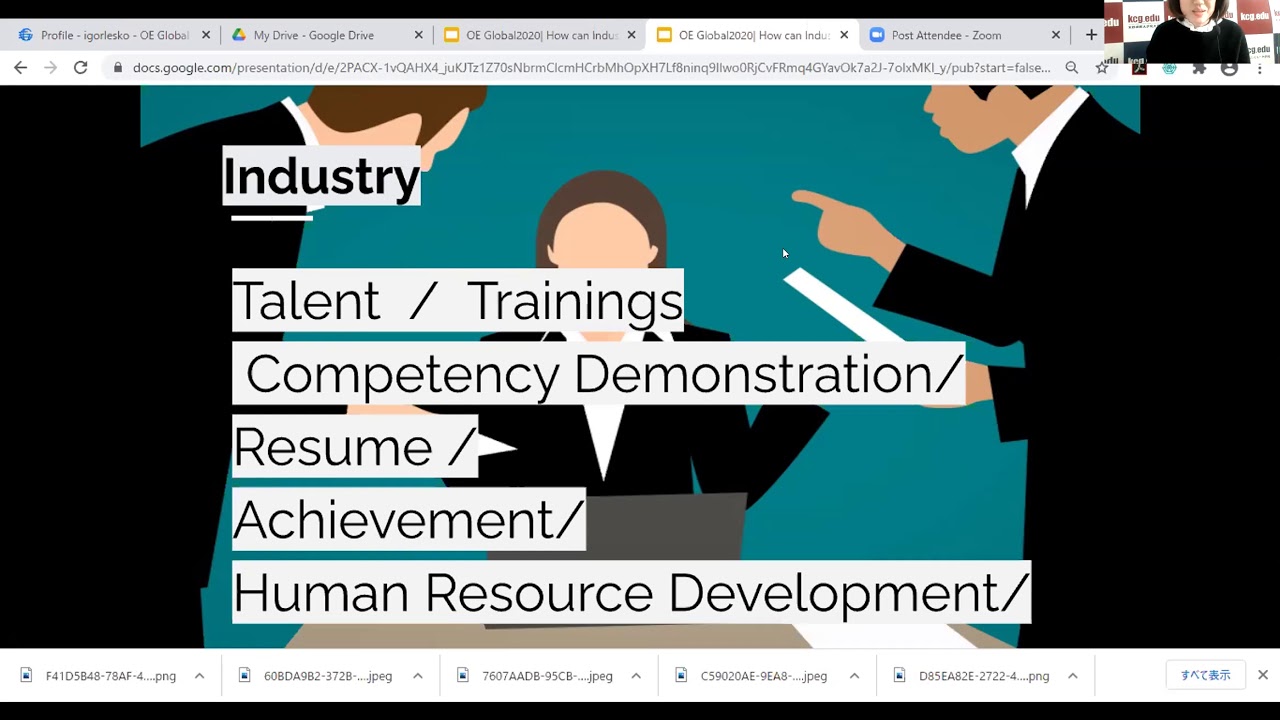Author: Keiko Tanaka
Institution: The Kyoto College of Graduate Studies for Informatics / Information Technology Federation of Japan
Country: Japan
Topic: Global Collaboration, Strategies, & Policies in Open Education
Sector: Higher Education
UNESCO Area of Focus: Developing supportive policy
Session Format: Lightning Talk
Abstract
Facing ever-widening skill gaps and labor shortage, Information Technology Federation of Japan, Japanese largest IT industry association, advocates competency alignment to formal education in the field of IT. By aligning i-Competency Dictionary (iCD), a reference framework for IT professionals in Japan developed by Information-technology Promotion Agency, it creates a ground for industry-academia cooperation, and opens validations from the industry about learning outcome from various education providers including MOOCs. This talk aims to briefly explain a model for promoting open education through industry initiatives in competency alignment without overhauling existing educational provisions.The problem of IT talent shortage in Japan is not new. It is rather persistent one since the early 80’s, but has never been solved. Today, Ministry of Economy, Trade and Industry projects that Japan will face a deficit of 789,000 software engineers by 2030. To overcome such challenges requires a grand change in education system. However, it is difficult to meet with the scale and the speed of technological evolution.
Information Technology Federation of Japan, established in 2016 as an umbrella organization serving various IT-related industry associations, proposed in the February 2019, the competency alignment using iCD to education in the field of IT as well as expansions of online courses to develop more AI-ready professionals. While they aim for securing IT talents, it consequently opens education and create collaborations between training and education.
The iCD framework consists of the task dictionary and the skill dictionary. The task dictionary is the collection of tasks required for an IT business; the skill dictionary is the collection of IT skills required to perform specific tasks. Since it was published in 2015, iCD has been used IT user organizations, IT vendor companies and beyond. Already dozens of corporate education providers have linked their courses to tasks and skills. National qualifications in the field of IT have been mapped to iCD as well. The matrix of tasks and skills bridge learning activities to real-life jobs.
In the spring of 2020, Information Technology Federation of Japan has agreed with JMOOC, Japan’s largest open online course provider, to cooperate in improving the quality and quantity of IT talents in Japan. As more courses in the field of IT become available via JMOOC, Information Technology Federation of Japan prospectively push for competency alignment in course descriptions and learning outcomes, and promote validation among its member organizations.
//Keiko Tanaka is a secretariat of the Committee of IT education and human resource development at the Information Technology Federation of Japan.
Keywords
Competency, MOOC, validation

 for giving me the fopportunity to explore Open Education back in 2014 with
for giving me the fopportunity to explore Open Education back in 2014 with 
 )
)